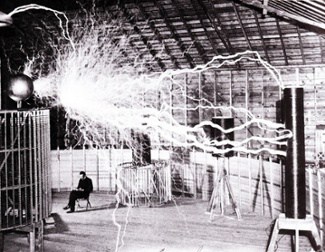An Invention to Help Alzheimer’s Patients Who Wander at Night

Posted by Jeff Durish
Sat, Feb 14, 2015
Alzheimers disease, along with its related dementias, is the fastest growing health threat in Canada. Between 2011 and 2031, a span of just 20 years, the number of Canadians living with Alzheimer’s and dementia will double from over 700,000 to an estimated 1.4 million. Today the direct medical and indirect lost earnings costs are about $33 billion per year. By 2040 this number will skyrocket to $293 billion.
These numbers are alarming, but they are nothing compared to the emotional and physical toll on the families of Alzheimers patients: up to ¾ of family caregivers develop psychological illnesses themselves, including depression. The risk of stress-related disease, such as high blood pressure, heart disease and stroke increases tremendously in those who care for someone with cognitive impairment.
One of the causes of stress for many Alzheimer’s caregivers is the tendency of patients to wander, particularly at night. About 60% of middle-stage Alzheimers patients wander, many of them in search of some unknown thing away from their homes. Its hard to get quality sleep, or even an adequate quantity of it, when you have to keep an ear tuned to the sound of footsteps in the hall all night every night. Sleep deprivation, in turn, increases the caregivers stress. Anything that can be done to relieve some of the stress on caregivers is welcome.
Enter Kenneth Shinozuka, a teenager living in California. He has been inventing smart products since he was in kindergarten, when he invented a motion detector system to be installed under bathroom tiles to detect when his grandparents fell in the bathroom. He didnt actually produce this invention; after all, he was only in kindergarten! But it sparked a lifelong (short as it might be, so far) interest in using technology to make lives better for the elderly.
At that point in his life his grandfather had already been diagnosed with Alzheimers disease. Growing up in a multi-generational household, Kenneth was very close to his grandfather and wanted to keep him as safe as possible. His most recent invention is a pressure sensor that he embedded in a pair of socks that his grandfather wears to bed every night. When his grandfather steps out of bed and puts his feet on the floor, the sensor sends a wireless signal to Kenneths aunts smartphone and rings an audible alarm. (His aunt is his grandfathers primary caregiver.) This allows her to sleep more deeply and longer, because she doesnt have to wake up frequently to check on her father.
Kenneths invention required knowledge in several scientific fields: creating a sensor that would work while still being comfortable for the patient to wear, designing a circuit that would send a signal to a mobile phone, and developing an app for the phone which would alert the caregiver.
For the sensor he needed a material that was thin enough to be worn on the bottom of the foot. Several materials, such as rubber, were too thick to transmit the right signal. He finally decided to print electrically conductive ink on thin plastic film. Success!
His next issue was that wireless transmission requires large amounts of power. He found a solution in Bluetooth low energy technology, which allowed the system to operate all night long. Finally he had to learn new coding languages to write the application which turned his aunts cell phone into a wireless receiver.
He first tested the device on his grandfather for a year. In that year, his grandfather got up to wander about 900 times, and the device alerted his aunt 100% of the time. With the success of his first prototype, Kenneth has begun trials in local nursing homes and is using the feedback from staff and patients to turn his device into a marketable product. For instance, he needed to invent solutions for people who didnt want to wear socks at night.
Kenneth is hopeful that using sensor data collected on a statistically significant number of patients can improve patient care and also possibly contribute to finding a cure for Alzheimers disease. He is currently correlating the frequency of nightly wandering to daily activities and diet.
Kenneths mission is to use technology to change lives for the better. He imagines a world where older people can live healthily and happily. With young people like Kenneth working on it, who have a lifetime of exploration ahead of them, it might just be possible.
Watch Kenneths TED talk here
More questions?
Want to speak to a care expert about how to ensure the safety of your loved one during these uncertain times?
Let's connect you with the closest available Qualicare expert in your city to answer your questions.
The Qualicare Difference
Comprehensive care planning led by experienced Care Experts
"Qualicare changed everything. Mom loves her new companion, meanwhile Jack and I have peace of mind and more time to focus on the kids. "
Janette Aldermaine


 Have Questions?
Have Questions?